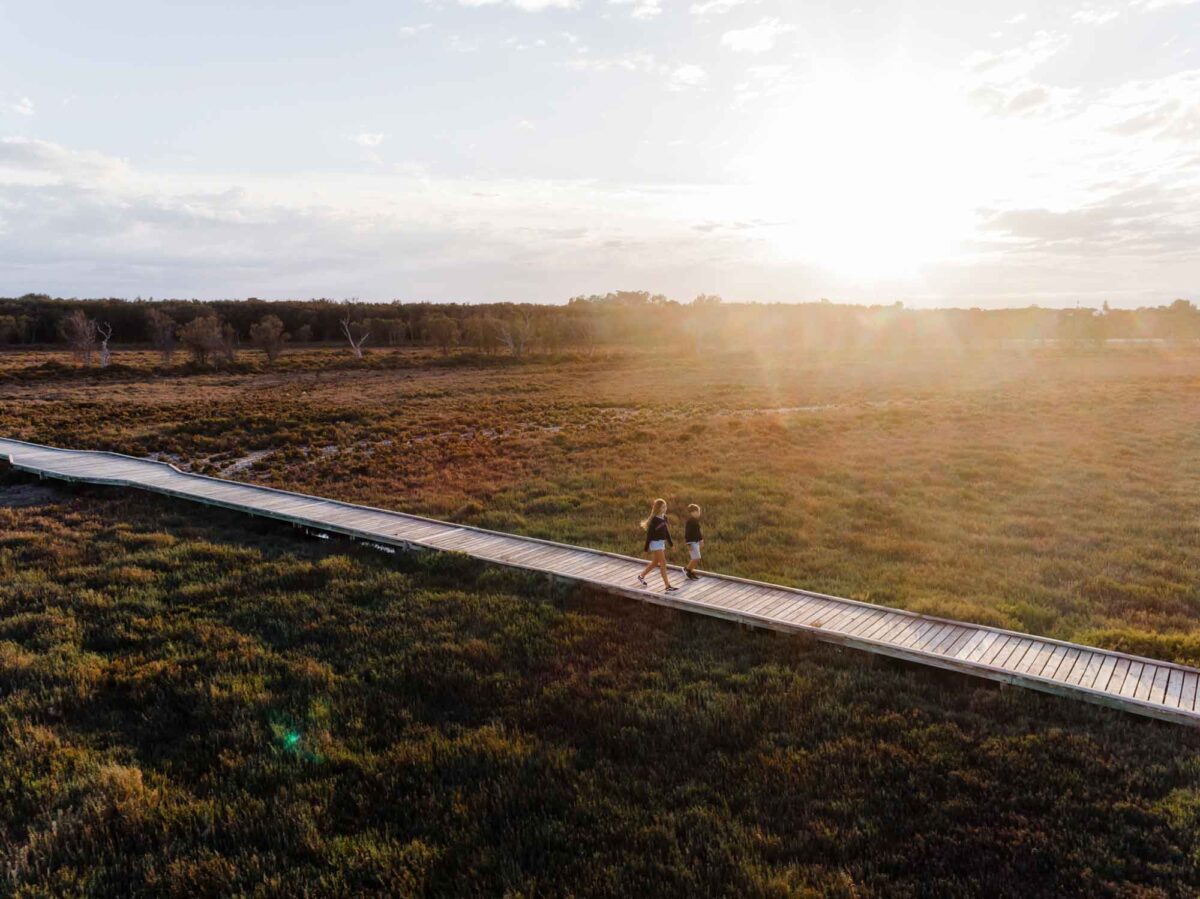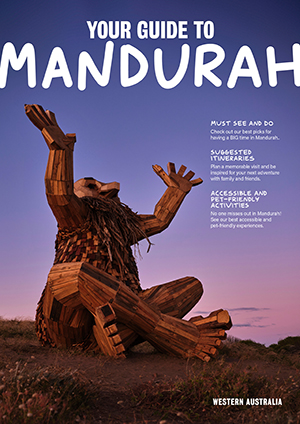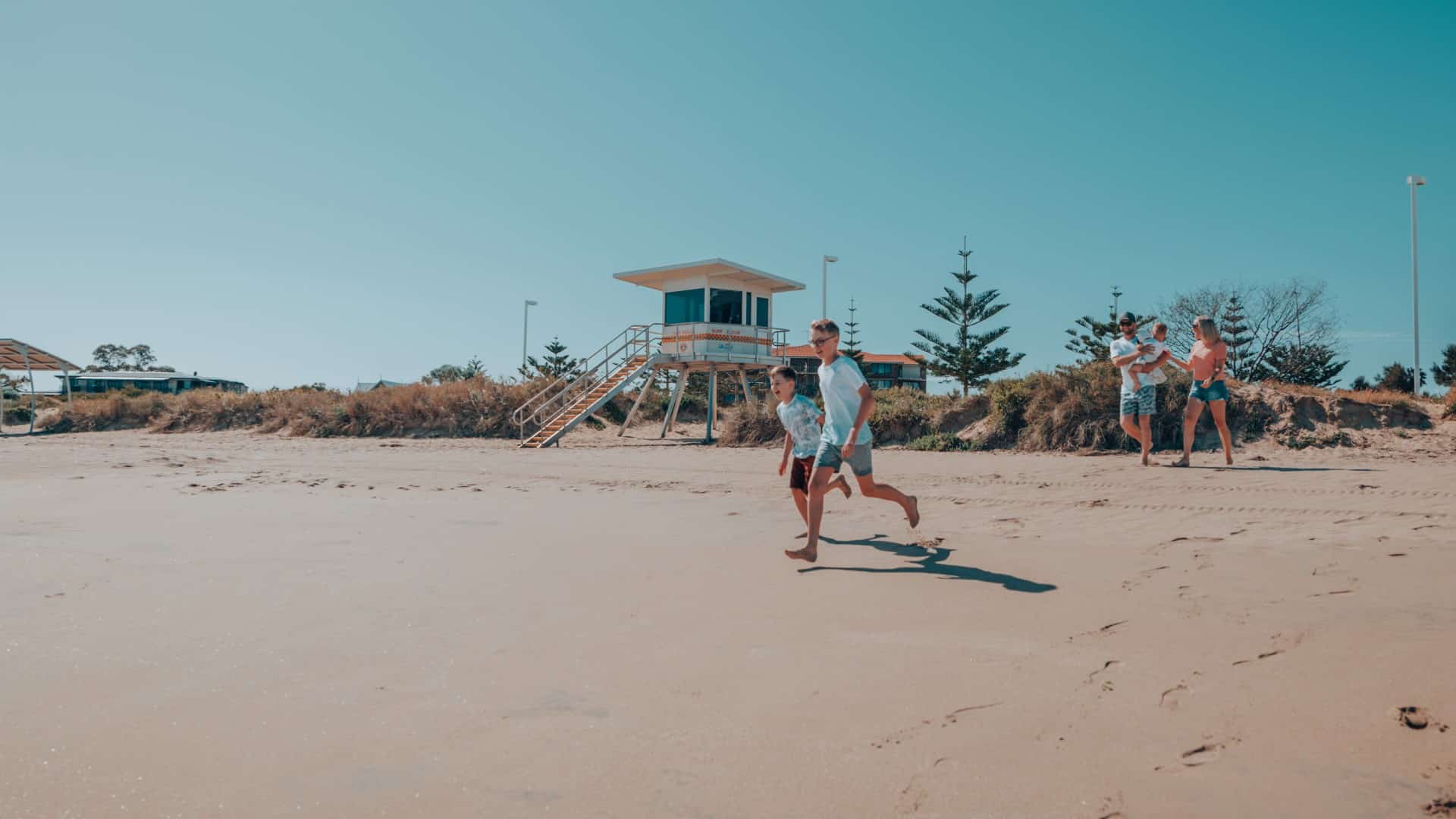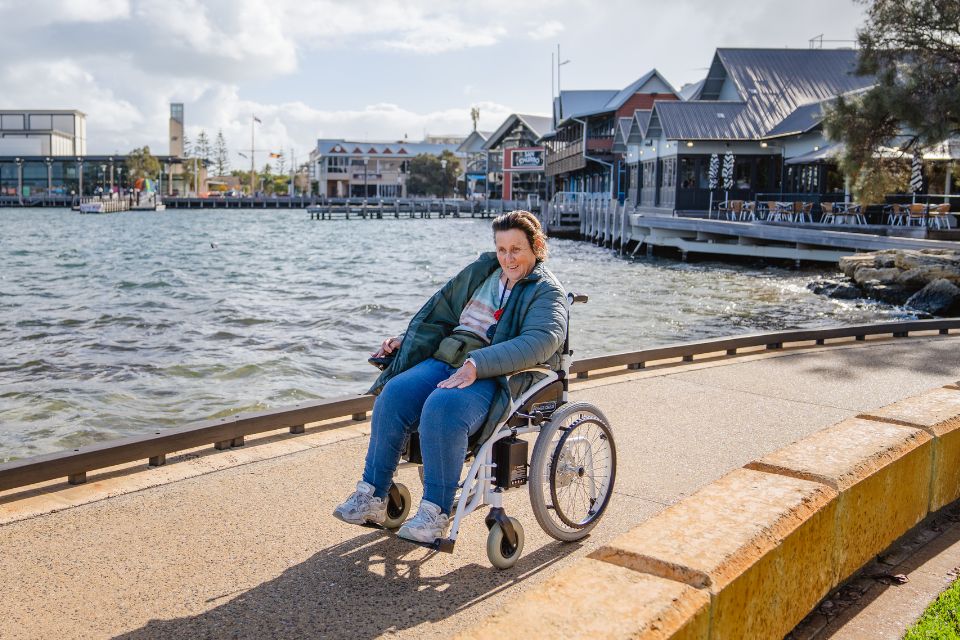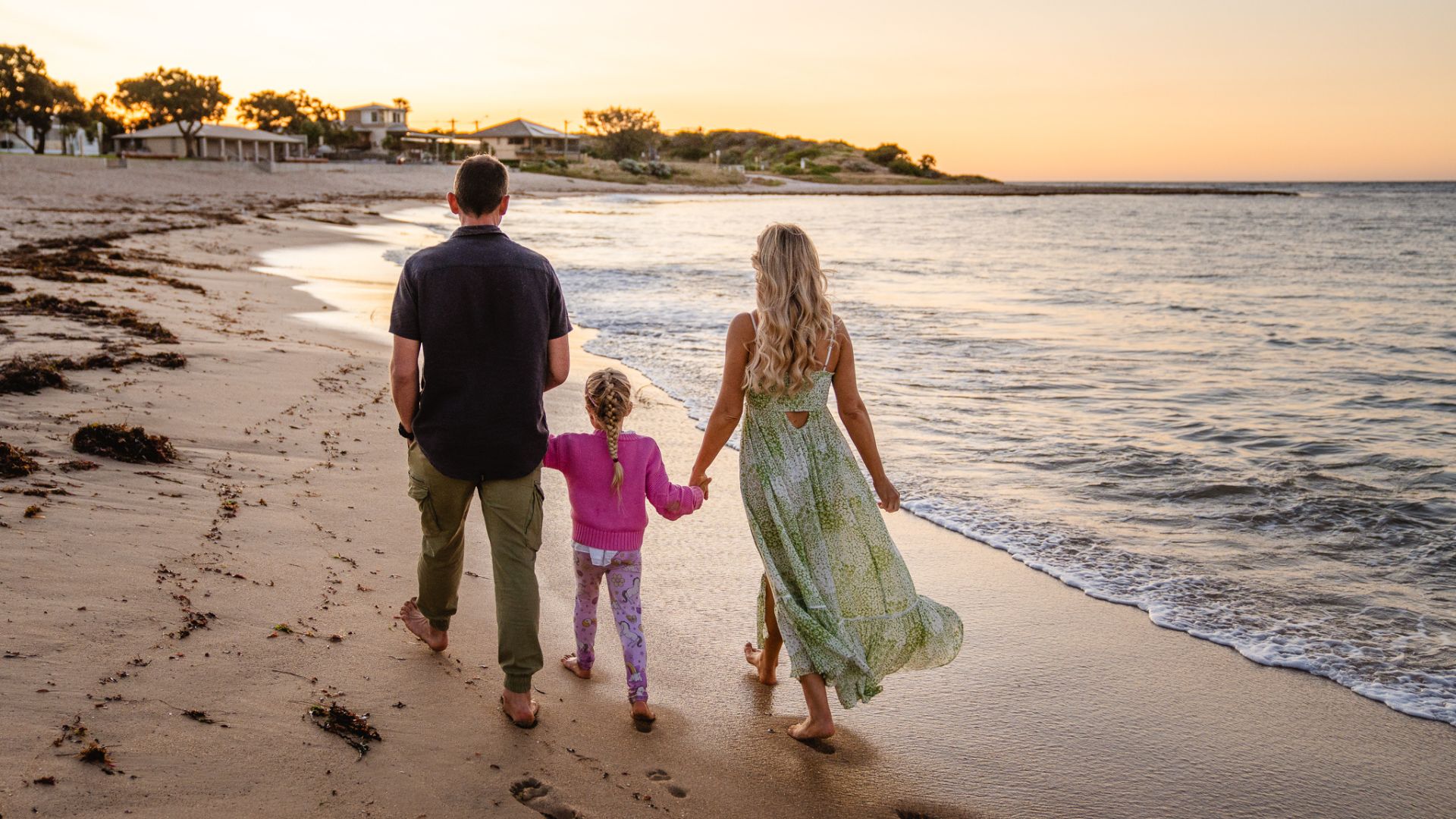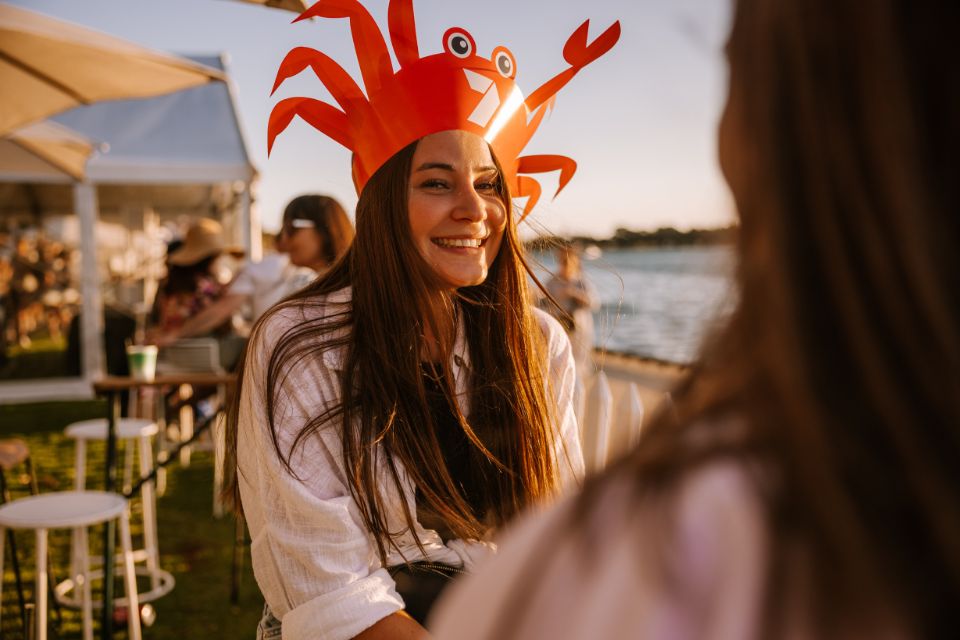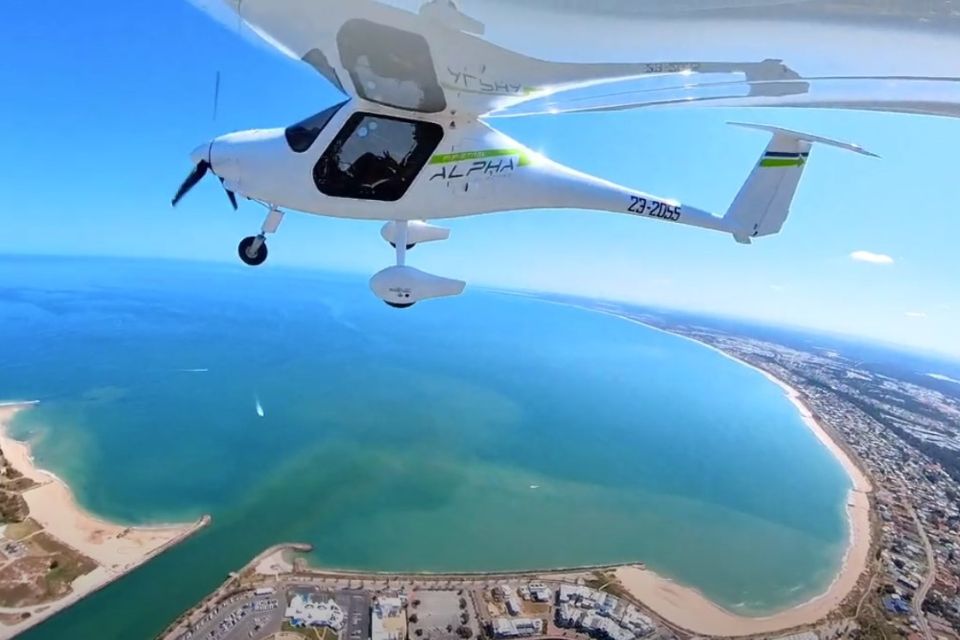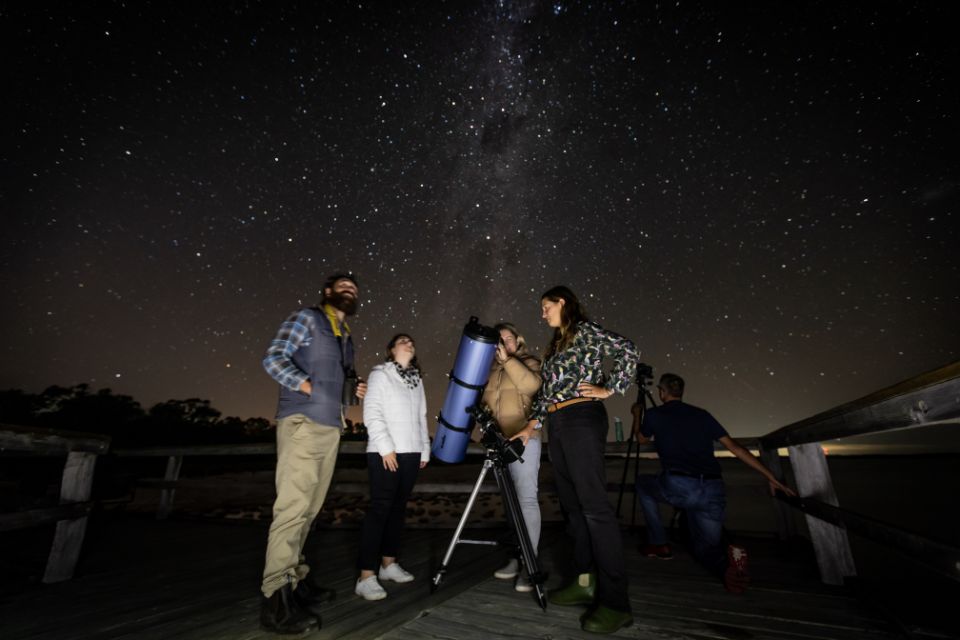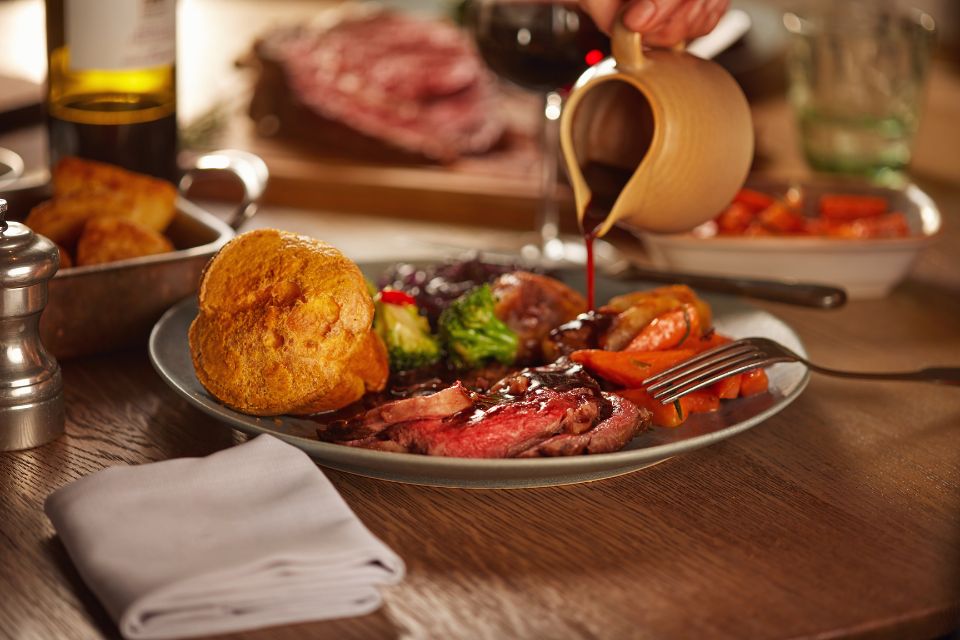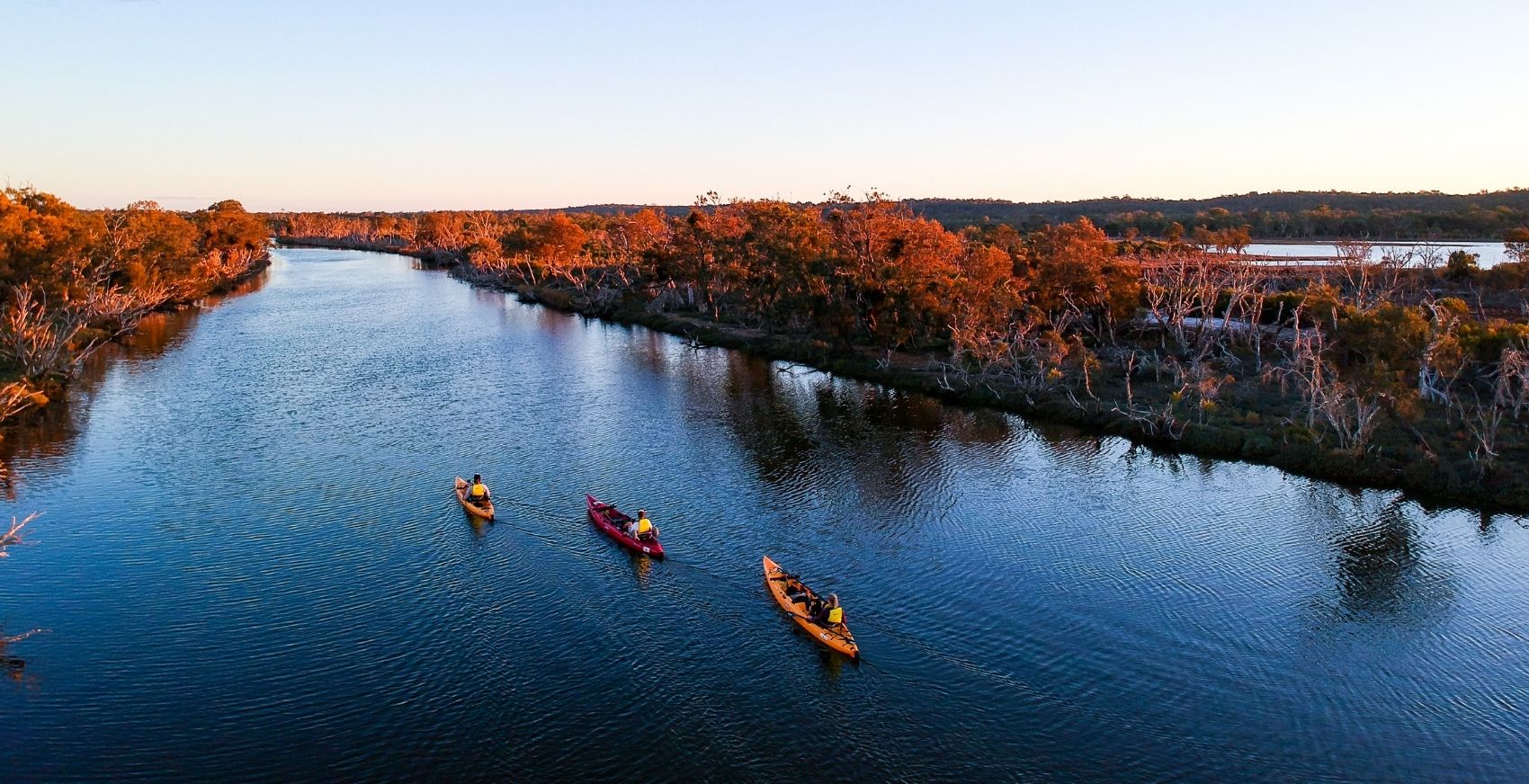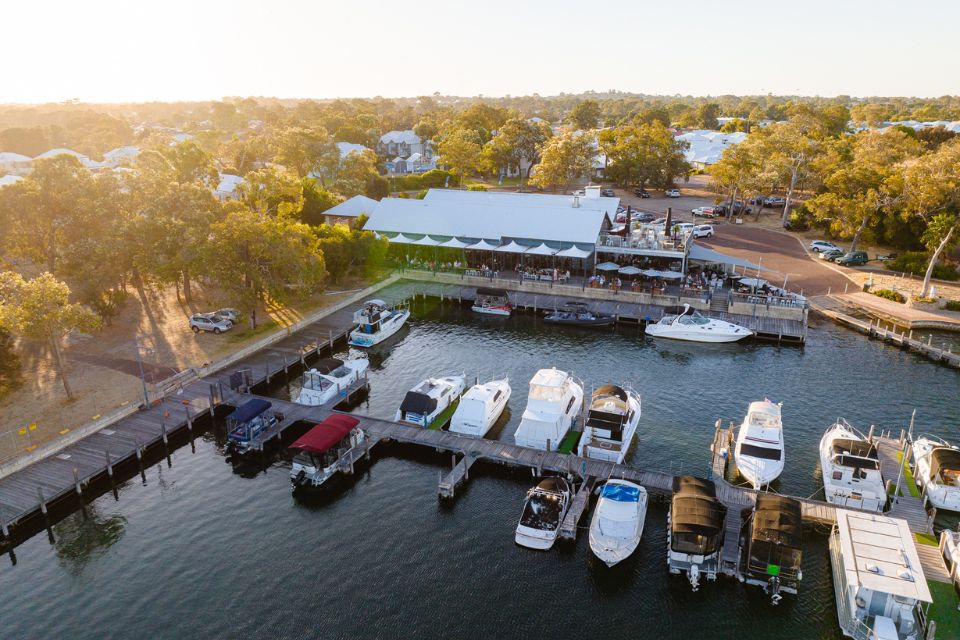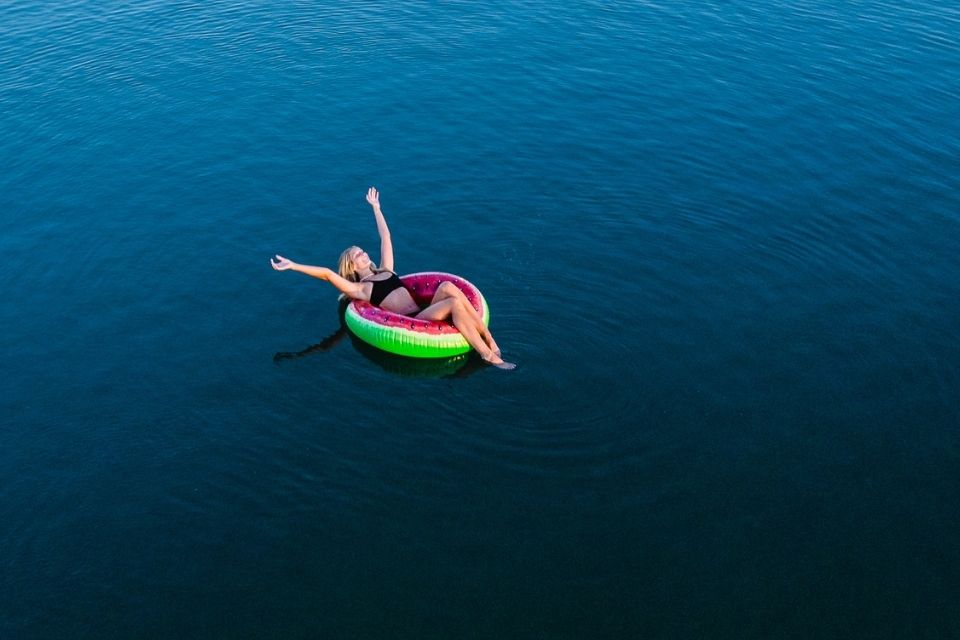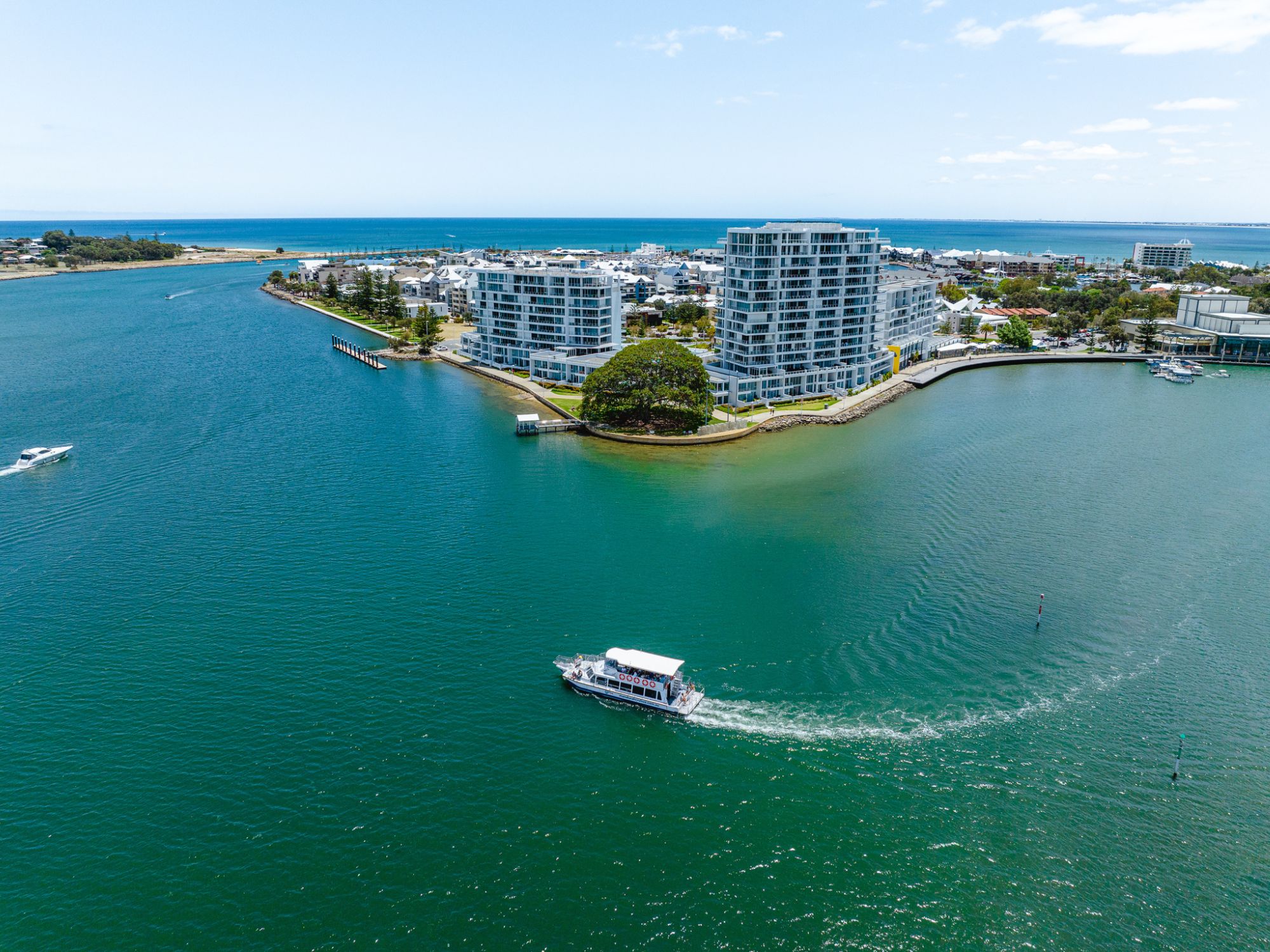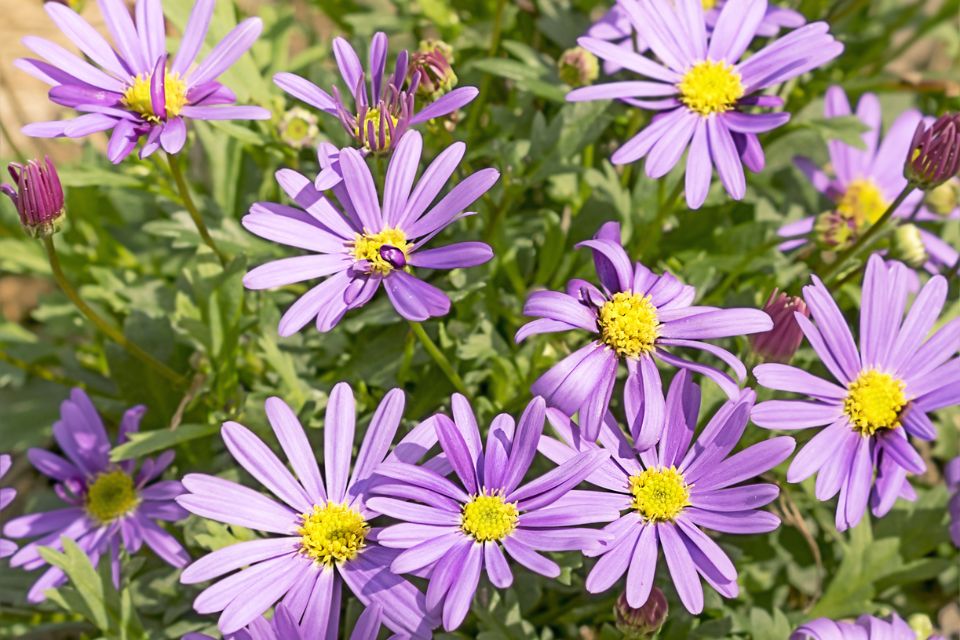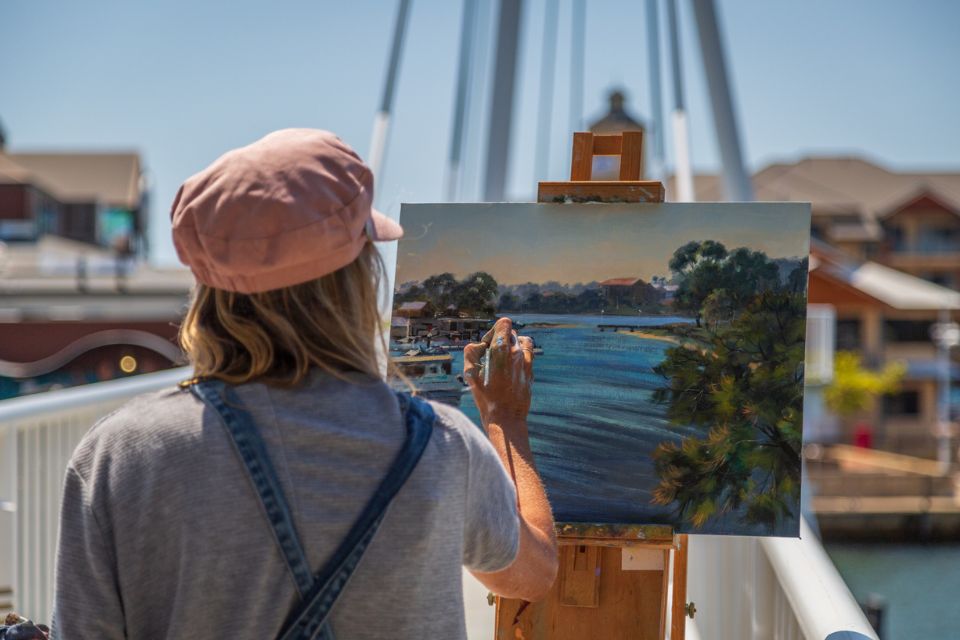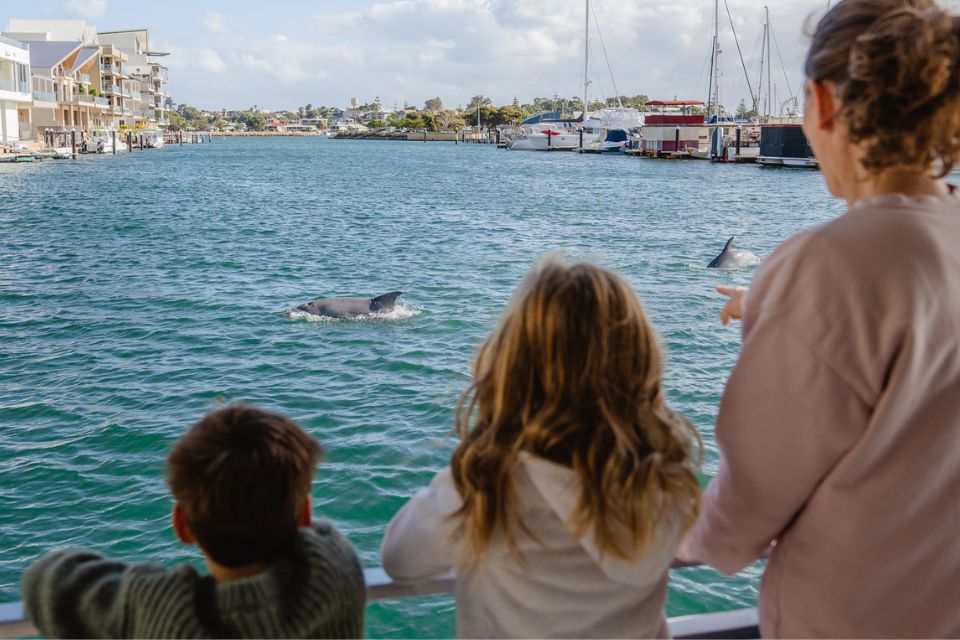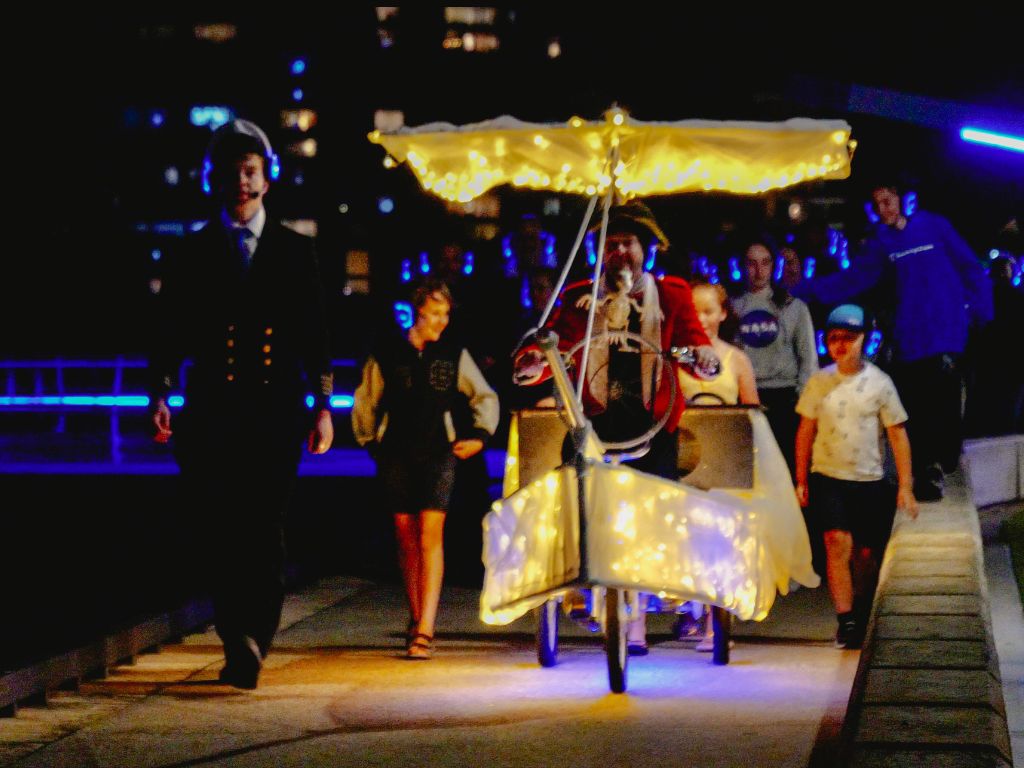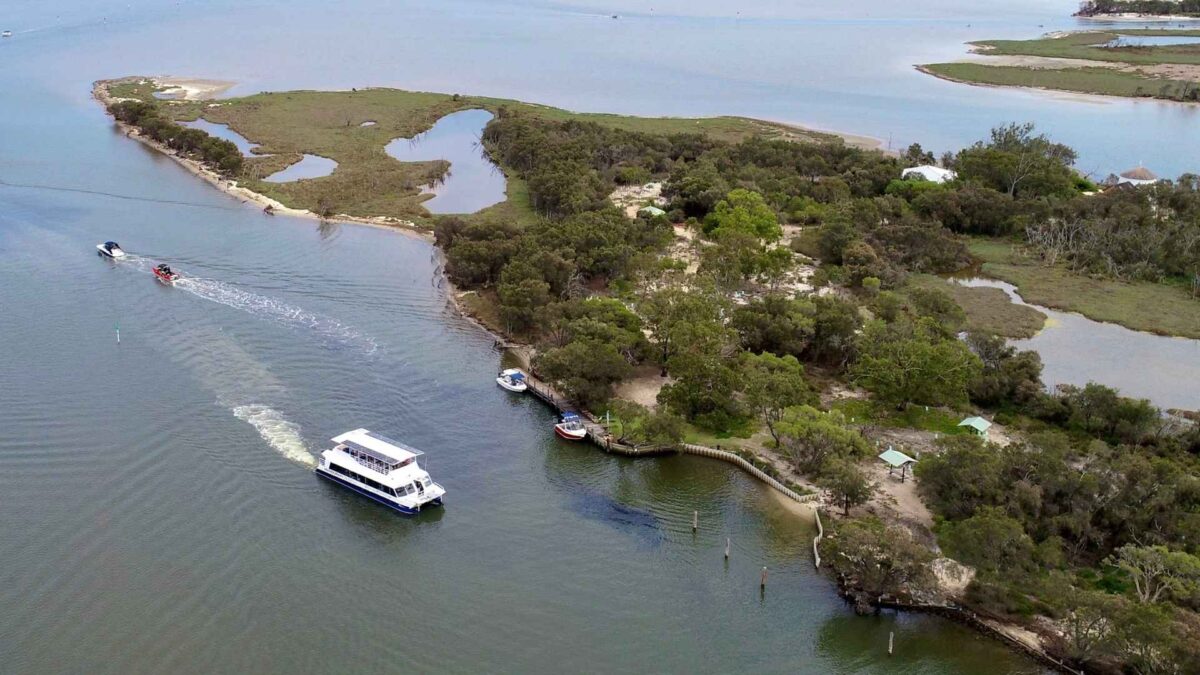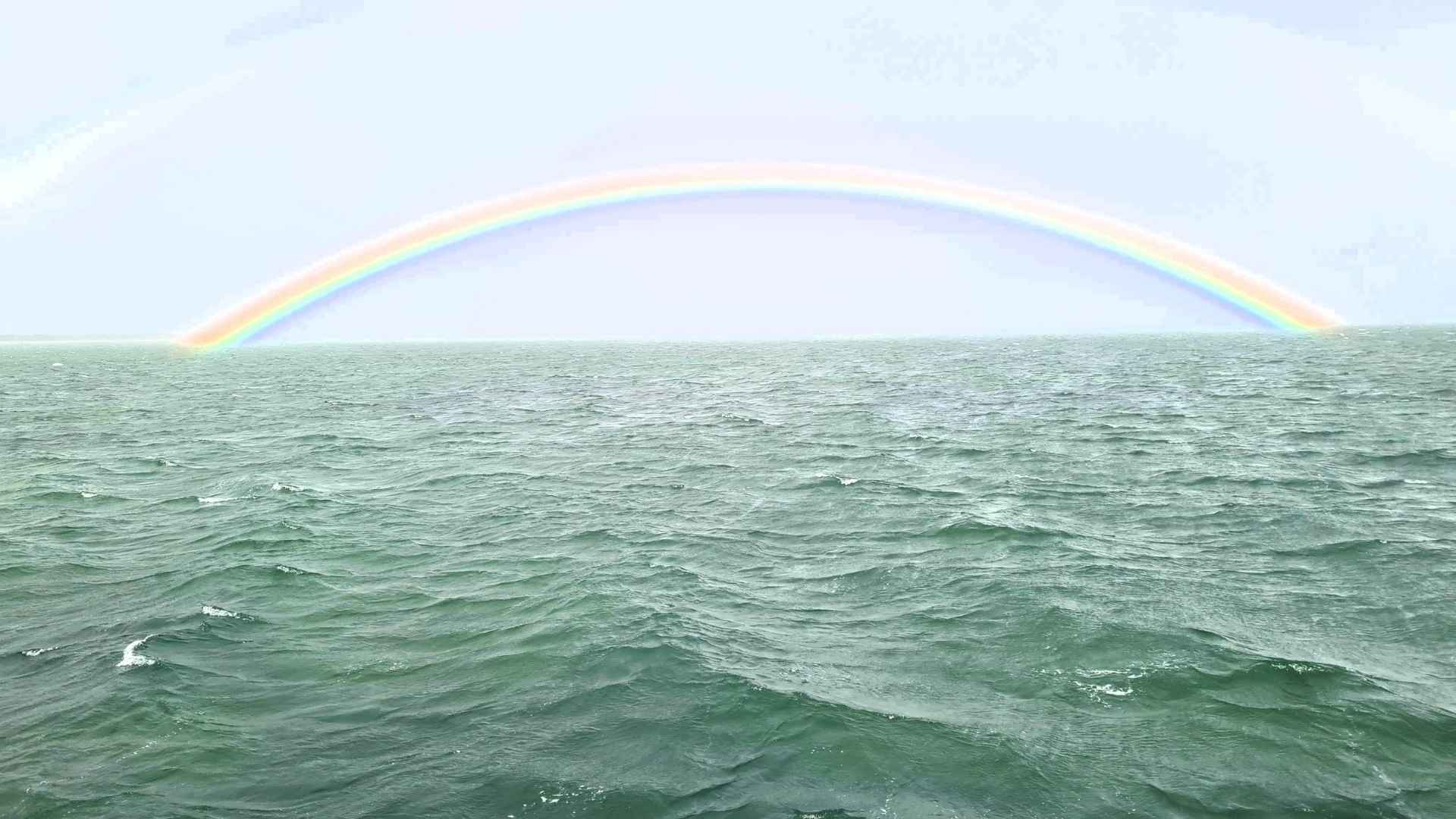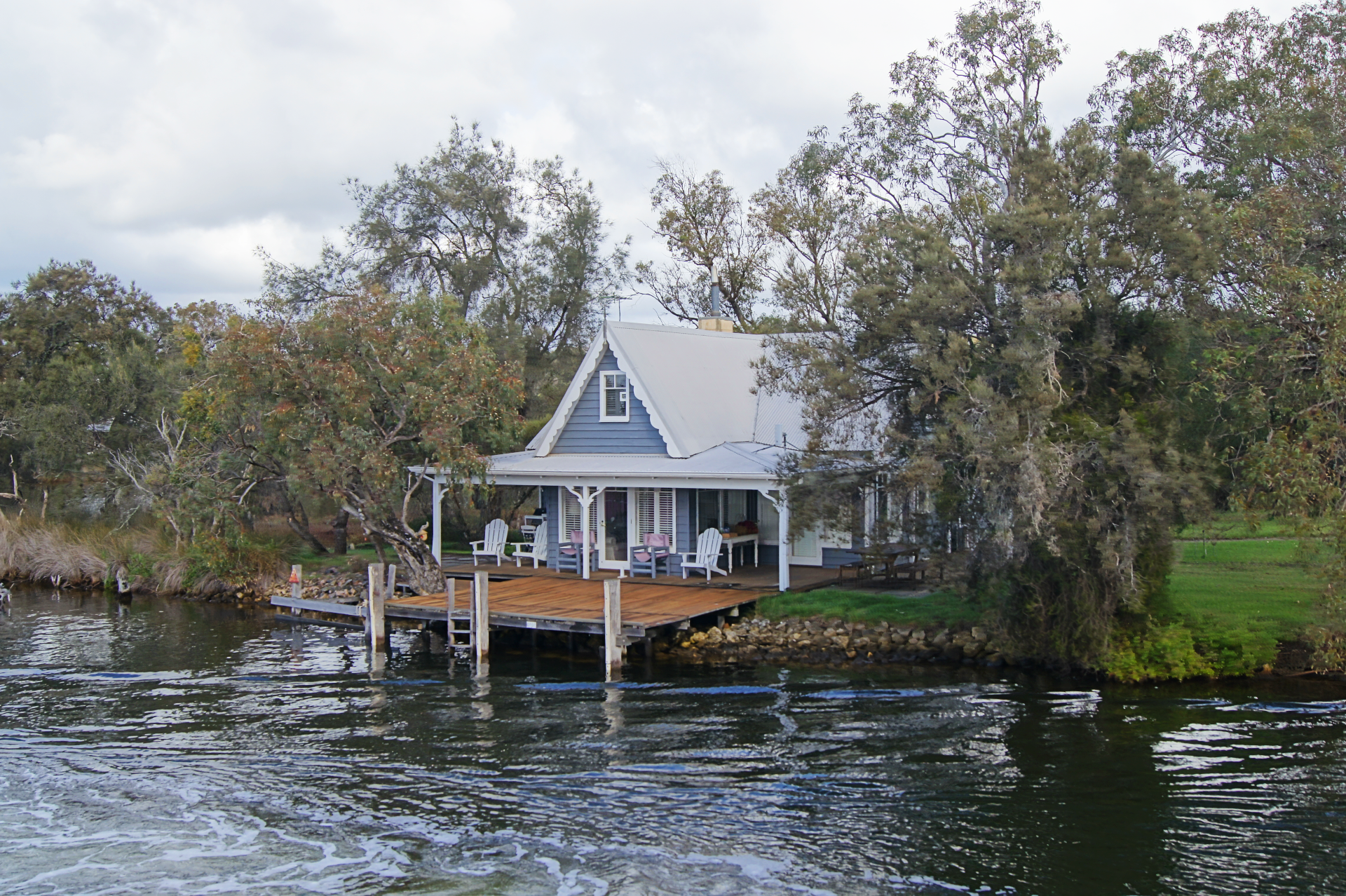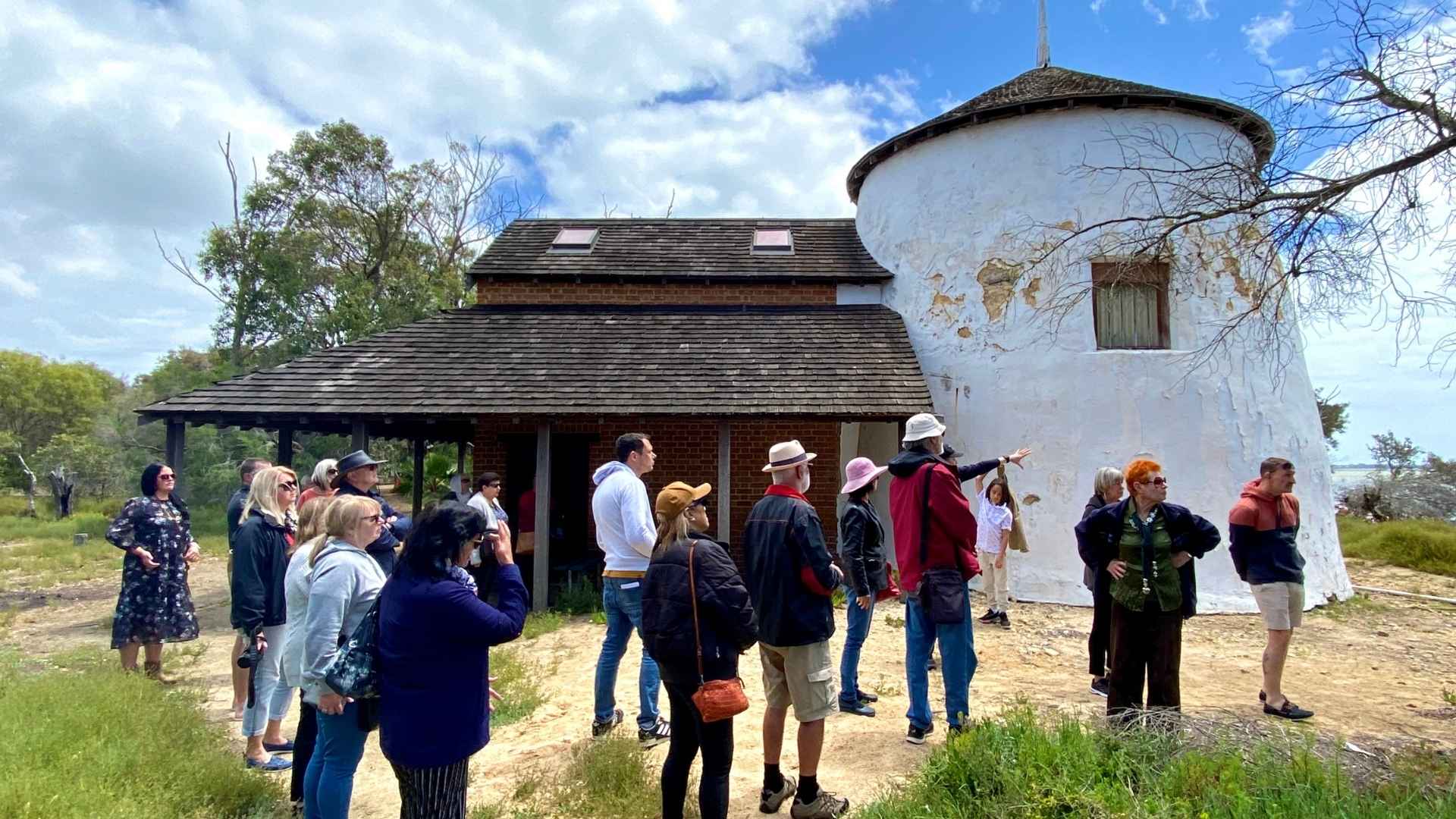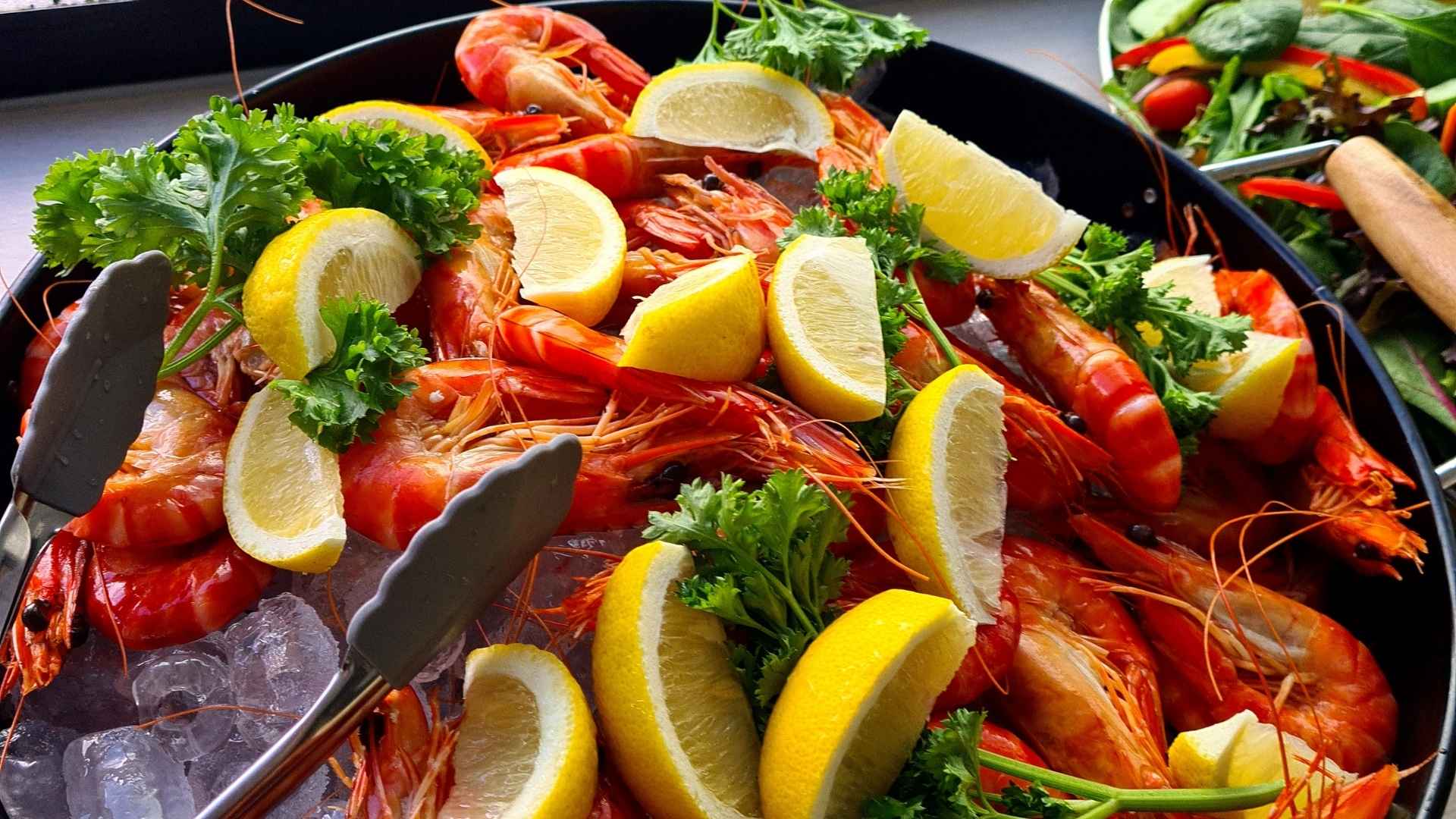5 reasons why you need to rethink and revisit Mandurah
By Julia D’Orazio for So Perth.
Mandurah, I am sorry I doubted you. I’m sorry I ever overlooked you. As a Perth city slicker who thinks of day trips to Rottnest or the Swan Valley, heading to your water-wonderland for a relaxing coastal getaway or spontaneous day trip hadn’t sprung to mind. To think you are only an hour away by car or easy train ride, please forgive me for not popping out of my Perth bubble to come out and explore sooner.
Mandurah, I owe you an apology and here’s why. I used to only think of Mandurah as a place to see dolphins galore, cruise countless scenic canals, and get your bib saucy at the much-loved (and crazy) crab fest, but there is so much more to see and do.
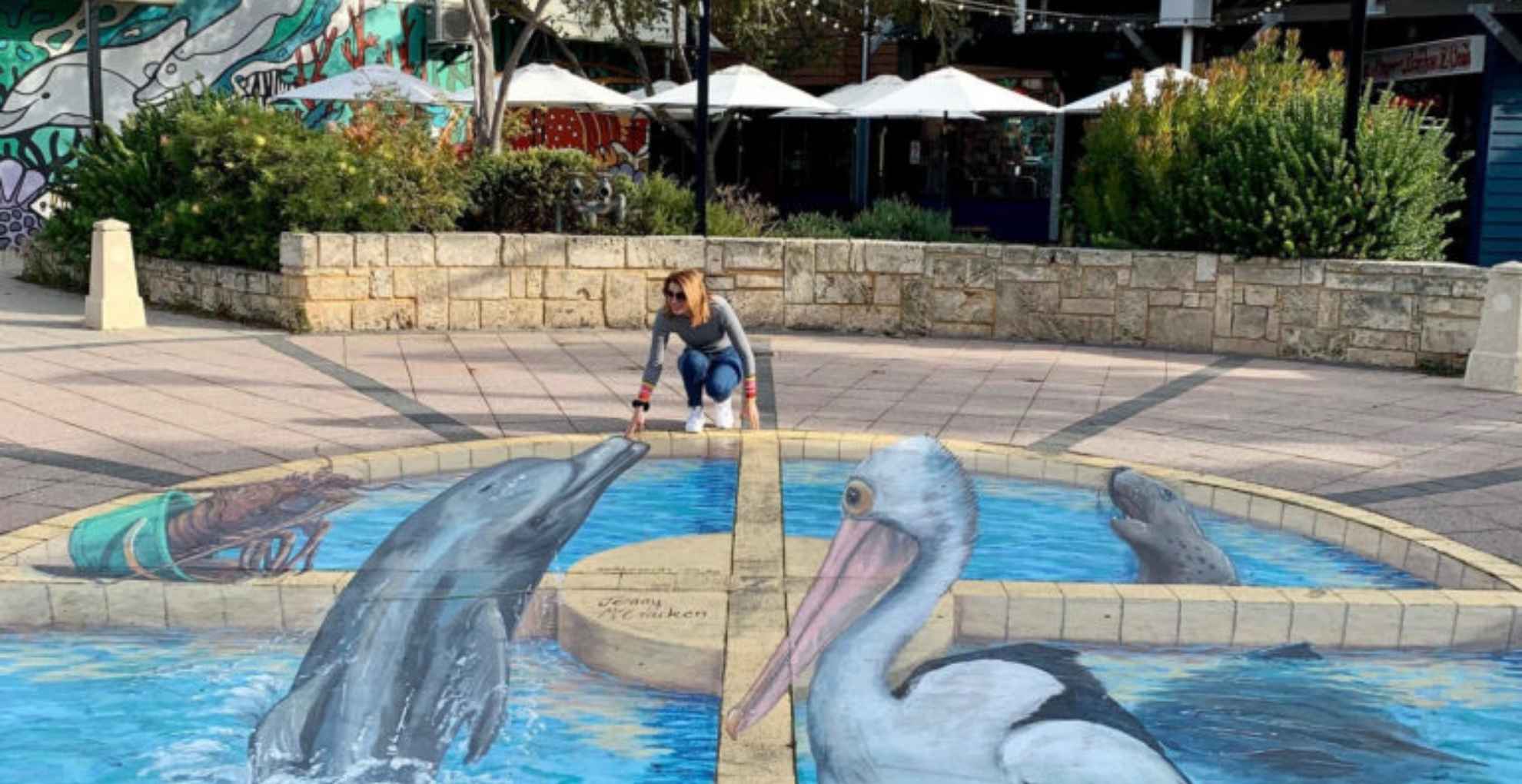
WA’s second-largest city undergoing rapid change – and boy, is she looking fabulous.
Exciting new foreshore developments are in full swing, Insta-worthy street art erected, and plenty of scenic cosy social spots have emerged. Even locals are now more in tune with the extraordinary sights found in their own backyard, with a slew of adventurous tours and quirky experiences on offer to explore Mandurah’s natural beauty spots.
To give you a better picture of what’s on offer, here I share my top picks on the unusual and unexpected things to do in Mandurah.
Explore Creery Wetland Nature Reserve
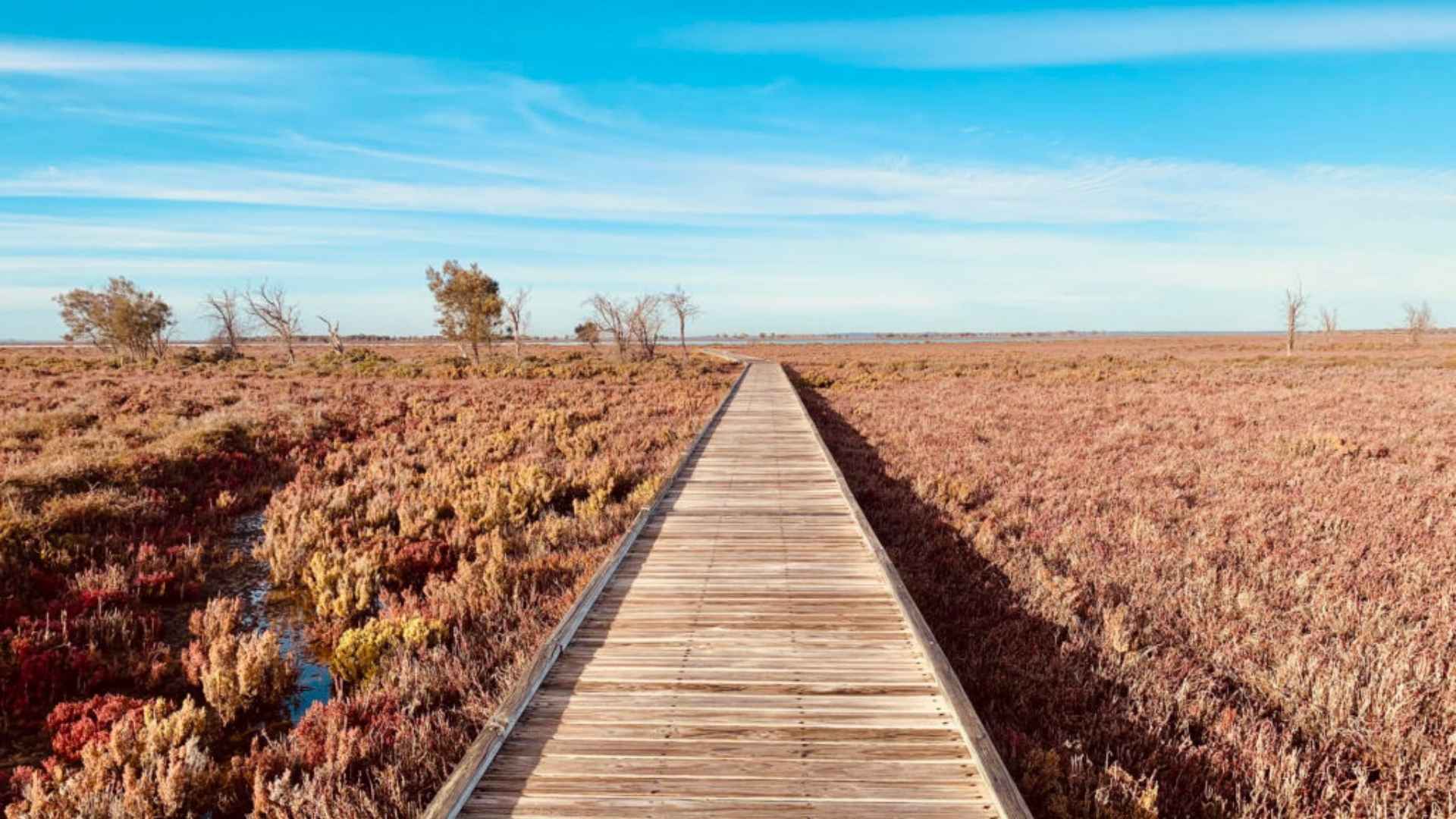
This may as well be Mandurah’s hidden secret – and that’s because it is.
A short drive from the main drag, a step in Creery Wetland Nature Reserve takes you far into the Mandurah wilderness you didn’t know existed.
The natural coop is recognised as a wetland of international importance and is the largest in South Western Australia. A magnet for waterbirds, the reserve is also frequented by 22 species of migratory shorebirds that travel as far as Japan to wet their feathers. So, if you are a bird lover, and want some fun with binoculars, then this is the sweet spot.
To get a better understanding of this biological hotspot, join a Ways To Nature walking tour and be blown away by the unique flora and fauna found on Mandurah’s doorstep. It’s a pleasant and informative way to reconnect with nature with tour guide Sarah leading the wildlife wander over boardwalks and seas of low-lying beaded samphire saltmarshes to give you a different perspective on what constitutes the Australian bush. And with the addition of seeing the silhouettes of the Darling Ranges out on the horizon, you’ll soon realise, with Sarah’s knowledgeable input, how magical Mandurah’s natural assets really are.
Check out what other tours are available with Ways To Nature.
Ride a BBQ donut boat

Donuts, is there anything they can’t do? In Mandurah, the indulgent shapes are famously known as eco-friendly BBQ boats – and trust me, they are a treat.
No skipper licence is required to voyage these nifty Eco BBQ Boats down the city’s famous canals and waterways. These floating orange doughnuts are perfect for group gatherings (six and ten-seater options available) and each is equipped with a central BBQ and drink holders aplenty. It’s a different way to enjoy Mandurah, cruising down Mandurah’s famous waterways to the wafting smell of a snag on a barbie.
BYO eats and drinks are permitted onboard these self-drive hire boats. But if you are in proper holiday mode, you can call in the chef to create a lavish grazing platter of cured meats, cheeses, artisan crackers, fruits and more.
Make sure to bring the beats to create a sailing soundtrack for your round table crusade along Mandurah’s channels.
Check out what other tour and hire options are available with Eco BBQ Boats.
Jet ski your way to see dolphins at play
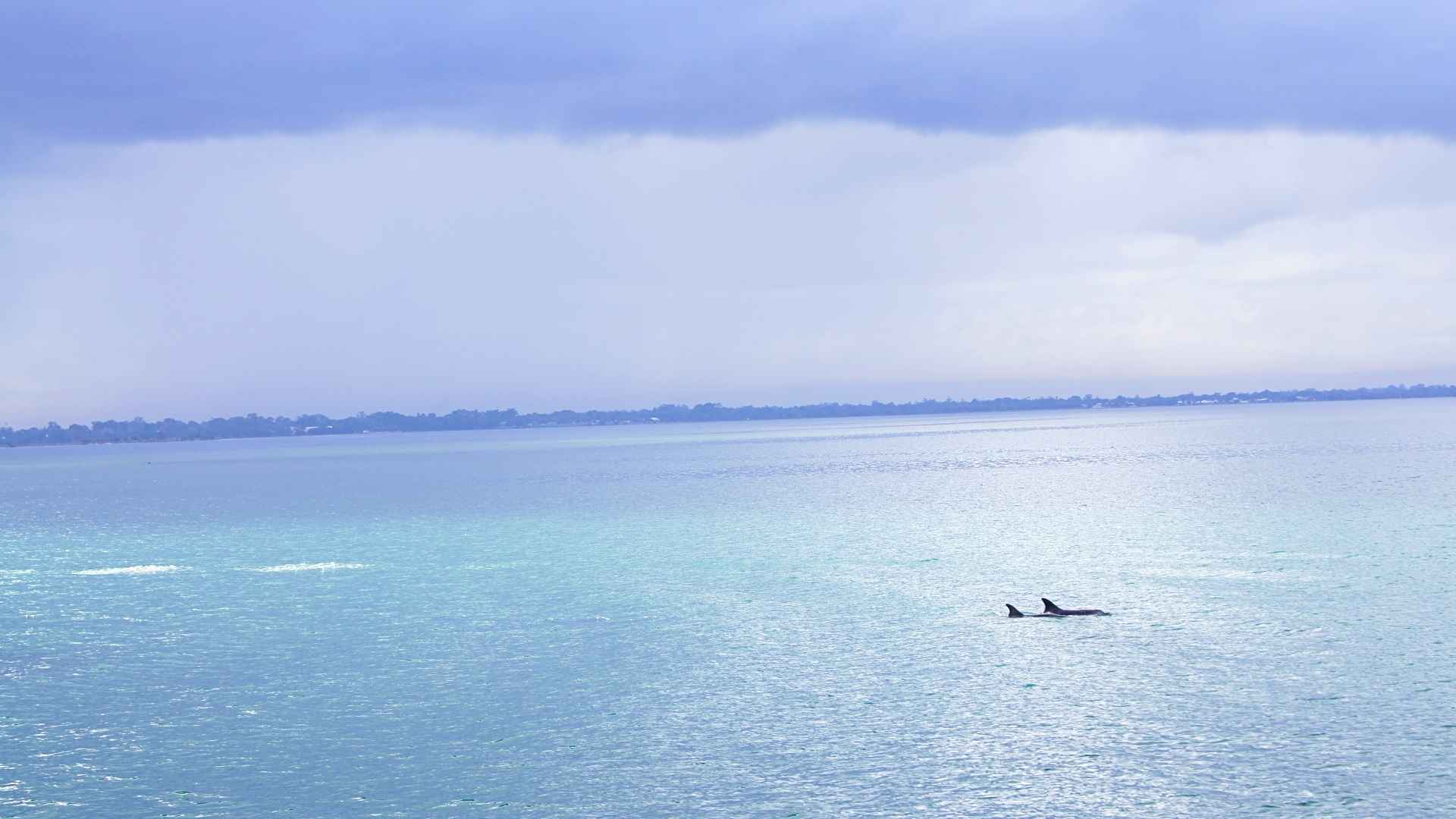
Hopping on board a jet ski may be the most Mandurah way to see dolphins, but I can assure you, it’s also the most fun.
This niche wildlife encounter is an adrenaline-charged adventure, with you at the helm racing your way around the sheltered waters of the Peel Estuary to see friendly flippers. Just hold on tight!
Jet skis are a non-intrusive way to get up close and personal with dolphins, and if lucky, Mandurah’s happiest residents may even follow your jet ski trail slicing through the estuary’s calm waters. It’s all the better when the pelicans get a case of FOMO, flying high over your head, shadowing your journey.
Stag Watersports offers jet ski hire and guided tours to suss out the spots you will most likely find dolphins fooling about. Tours are suited to all levels of experience, and whether you’re a beginner or a pro, you’ll have an epic time.
Check out what other tour and hire options are available with Stag Watersports.
Bike n’ boat your way around Mandurah
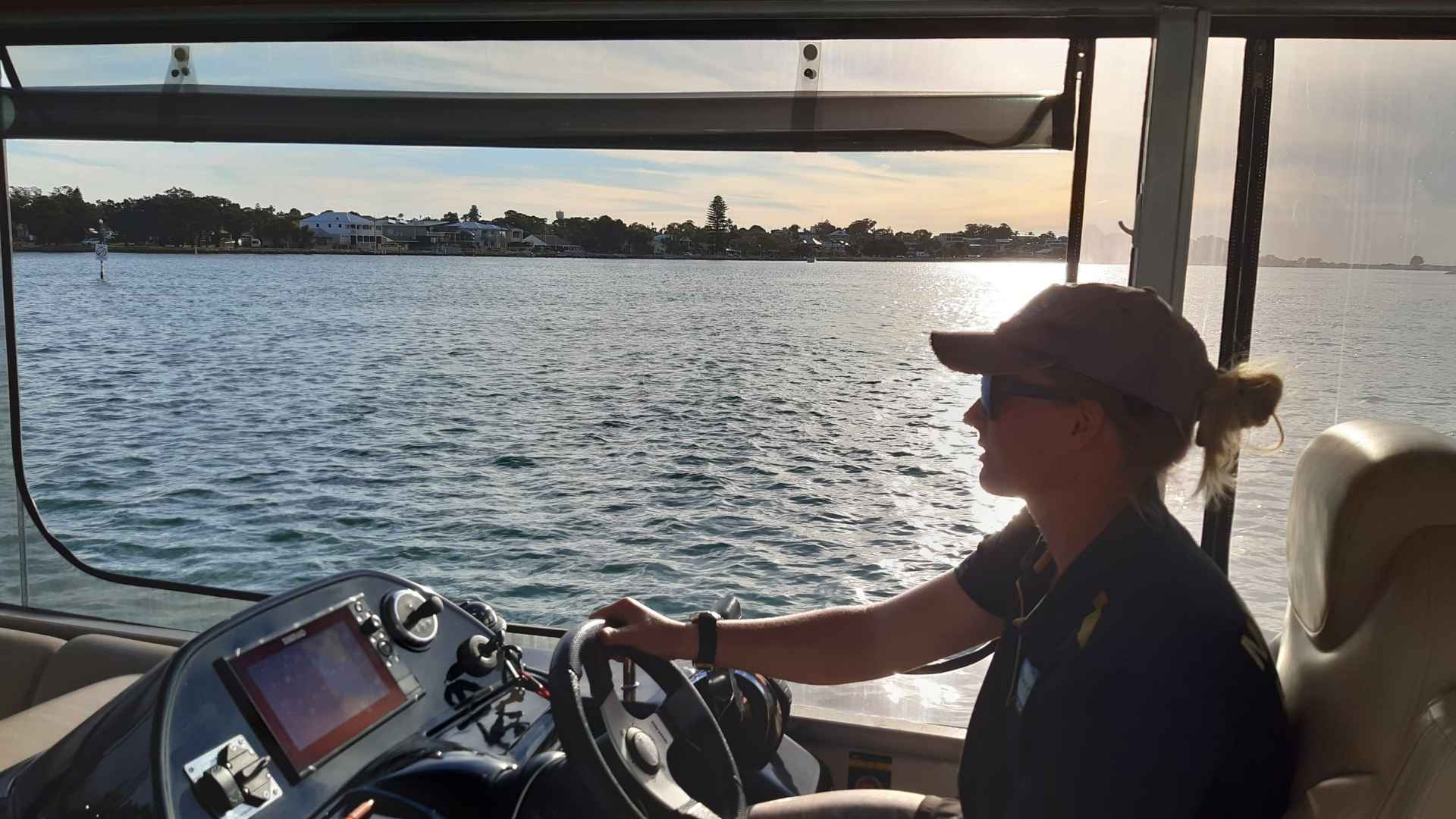
Remember the Old El Paso taco girl solving all life’s problems with “Porque no los dos?”
Follow her lead and mix up your Mandurah sojourn with a little bit of column A and a little bit of column B with Mandurah Boat Hire. The locally-run business has various transport modes – boats, bikes and SUPs – to let you explore Mandurah’s gorgeous waterways.
Make sure to tell your mates to come along as there is a wide range of self-drive boats to hire from dinghies, suntrackers, runabouts and pontoons in all sizes. If the occasion calls for it, private luxury pontoon charters – complete with ultra-plush seating – are also available and includes a skipper so everyone can sit back and relax.
Back on land, hop on two wheels to see a different side of Mandurah because there is a lot. Peddle past Mandurah’s iconic fig tree, be inspired with the colourful Mandurah Art Trails that are Instagram worthy, enjoy a slow ride past picturesque Venetian canals, and see the skaters flip their boards at the new world-class skatepark.
You’ll soon discover it may be a stop/start affair with many gorgeous sights worth putting on the brakes.
Check out what hire options are available with Mandurah Boat Hire.
See where the wild things are
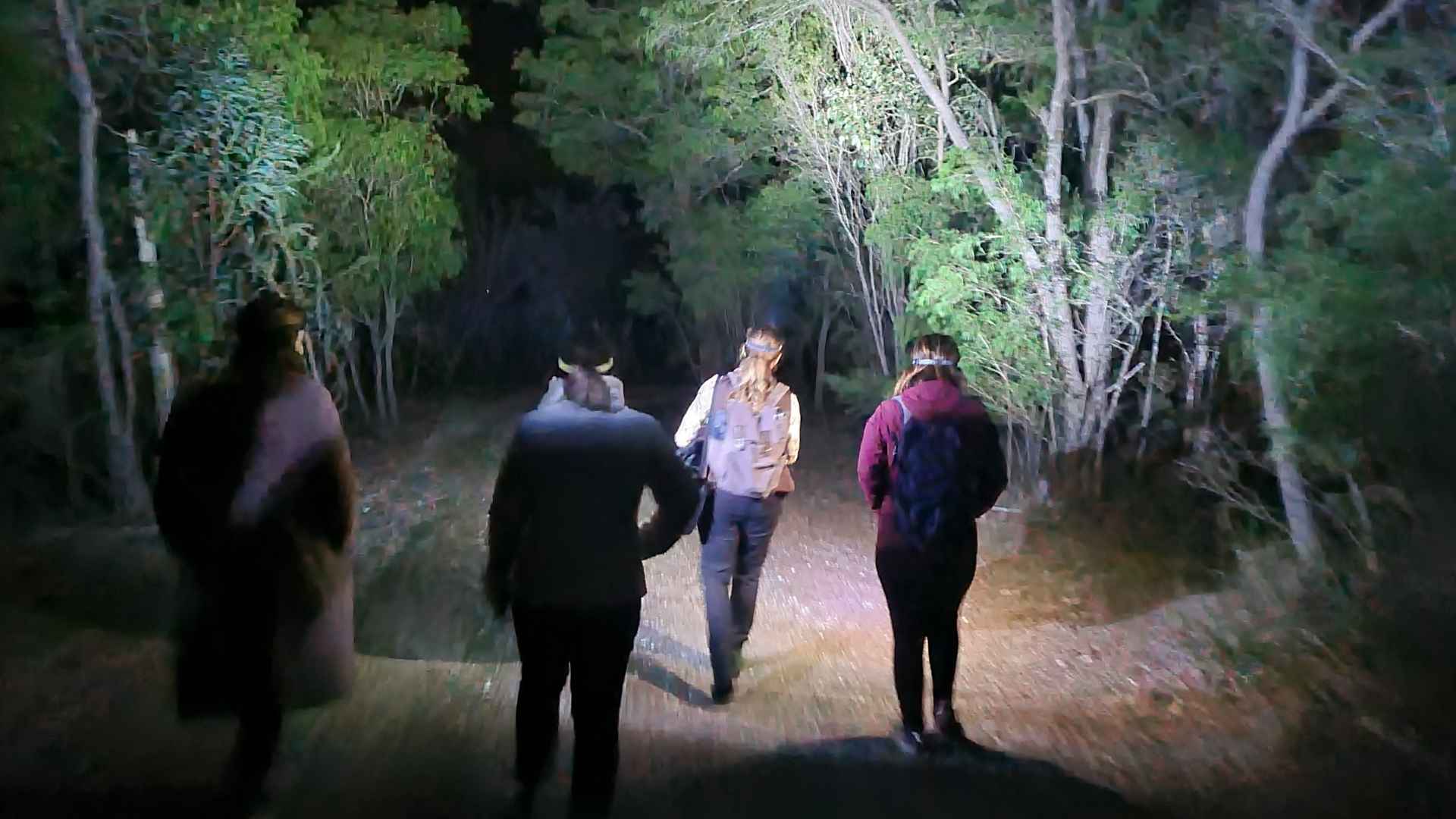
When the sun goes down, the stars come out, and so do Mandurah’s endearing residents.
Put your head torch on and let husband and wife duo, naturalists Base and Jamie, lead the way through a set of roaming locations such as nature reserves and lakes to spot Mandurah’s unique nocturnal wildlife and star gazing sights.
This newly minted original tour showcases a side of Mandurah not many get to see – or even knew about – and it is so fascinating to become more aware of the city’s natural nightlife.
The expert tour guides will help you observe the tree-top antics of critically endangered western ringtail possums, brushtail possums, and other wildlife skilfully hiding in the forest. You may even spot Mandurah’s mascot to rival Rotto’s quokkas, the quendas, best described as WA’s very own little bandicoots running along the forest floor. The nocturnal tour experience is dialled up a notch using night-time binoculars if your night vision fails you.
The tour encourages you to be mindful of the little things, and you may never look at nature the same way again soon after. From observing the amount of life to be found on a small patch of a big tree, spotting glow in the dark fungi, and watching spiders hastily unravelling their webs, this side of Mandurah almost starts to feel as if caught up in a David Attenborough documentary.
The naturalists also offer other eco-tours showcasing Mandurah’s natural assets sustainably and responsibly, from kayaking, bushwalking and stargazing tours around Island Point Reserve, Lake Clifton Thrombolites and beyond.
Check out what other tour options are available with Salt and Bush Tours
Whatever you decide to fill up your days with, rest assured, being surrounded by Mandurah’s pristine nature, you will feel zen. And as for me, I am now unapologetically a Mandurah fan.
There are, of course, many more ways to enjoy Mandurah’s great outdoors, and you can find out more here.
Originally published as ‘5 Reasons Why You Need To Rethink & Revisit Mandurah‘ by So Perth.
Header image: Courtesy of Daniel Wilkins
Find more inspiration
TAKE A LOOK AT SOME OF OUR BEST PICKS
